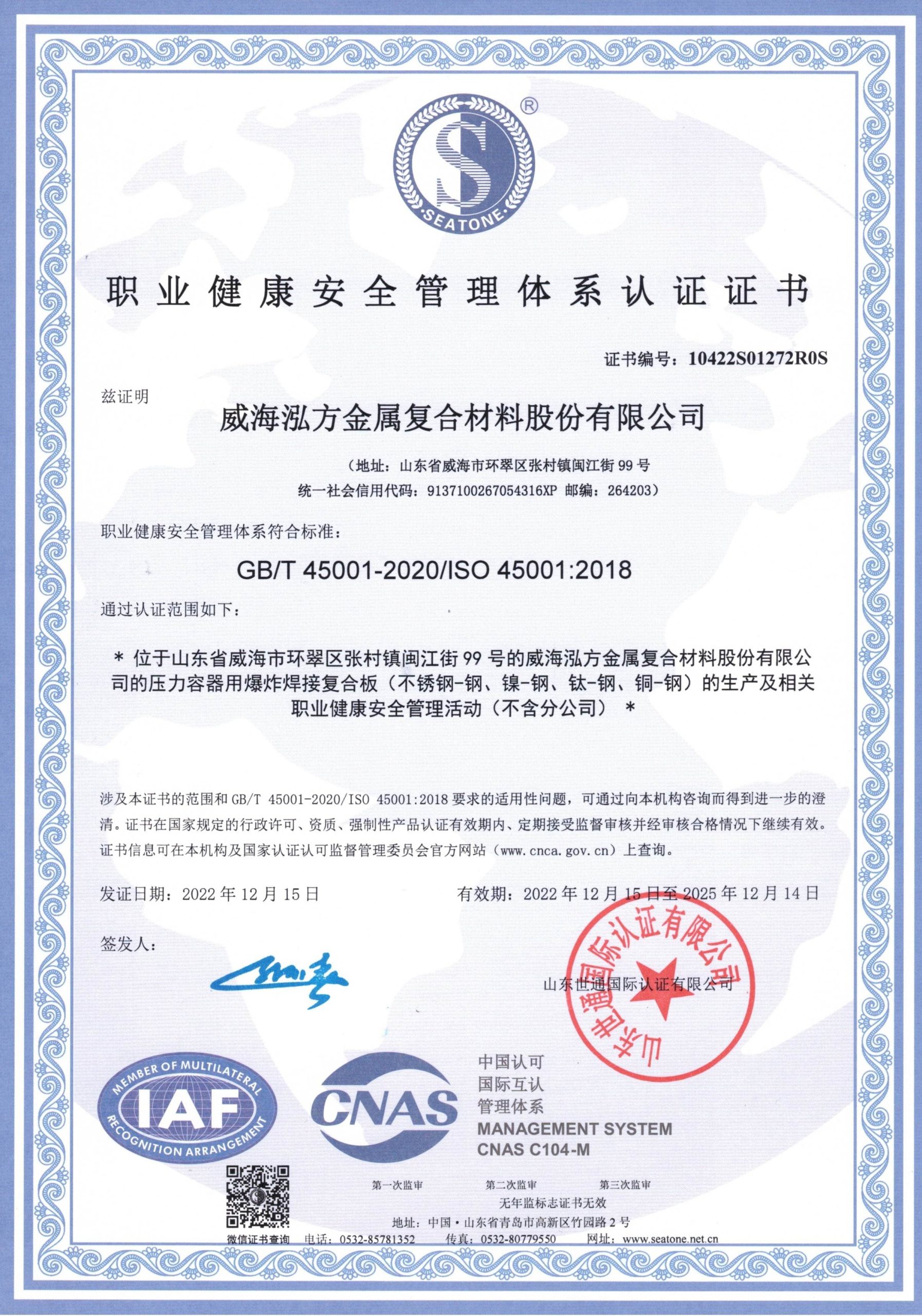Nickel-steel clad plate is formed by laminating thin sheets or plates of nickel and steel together and subjecting them to high temperature and high pressure treatment. This composite material can fully leverage the corrosion resistance of nickel and the strength of steel, exhibiting excellent tensile strength, fatigue resistance, and corrosion resistance.
Physicochemical Propertiese
Corrosion Resistance: Nickel demonstrates exceptional corrosion resistance in certain media, particularly towards alkalis and certain acidic and alkaline organic compounds. However, its corrosion resistance to sulfurous acid, hydrochloric acid, and especially nitric acid, is relatively poor.
Physical Properties: Nickel boasts a high melting point (1455°C), moderate strength, high plasticity, and excellent processing and welding properties.
Application Fields
Nickel-steel clad plates are widely used in aerospace, chemicals, marine engineering, power generation, and nuclear power sectors.
Aerospace: Utilized in the manufacturing of critical structural components for aircraft, rockets, and missiles, such as engine casings, gas turbines, and combustion chambers.
Chemicals: Employed in the fabrication of reactors, storage tanks, and heat exchangers, enduring high temperatures and corrosive media.
Marine Engineering: Extensively applied in offshore oil platforms, ships, and marine structures, enduring corrosion from seawater and high-strength demands.
Power Generation and Nuclear Power: Used in the production of power generation equipment, steam generators, and nuclear reactor vessels, enduring high temperatures, high pressures, and corrosive media.
Production Process
The production process of nickel-steel clad plates primarily consists of three stages: cladding, rolling, and heat treatment.
Cladding: Nickel alloy and steel substrate are melted and then coated together through spray methods. Common cladding processes include flame spraying, arc spraying, and plasma spraying, with arc spraying being the most frequently used.
Rolling: The clad nickel-steel plate is subjected to rolling to achieve a thinner gauge, meeting the application needs of various fields. Rolling processes include multiple passes of hot rolling and cold rolling.
Heat Treatment: This process aims to impart certain mechanical properties and corrosion resistance to the nickel-steel clad plate. Common heat treatment methods include solution treatment and aging treatment.










